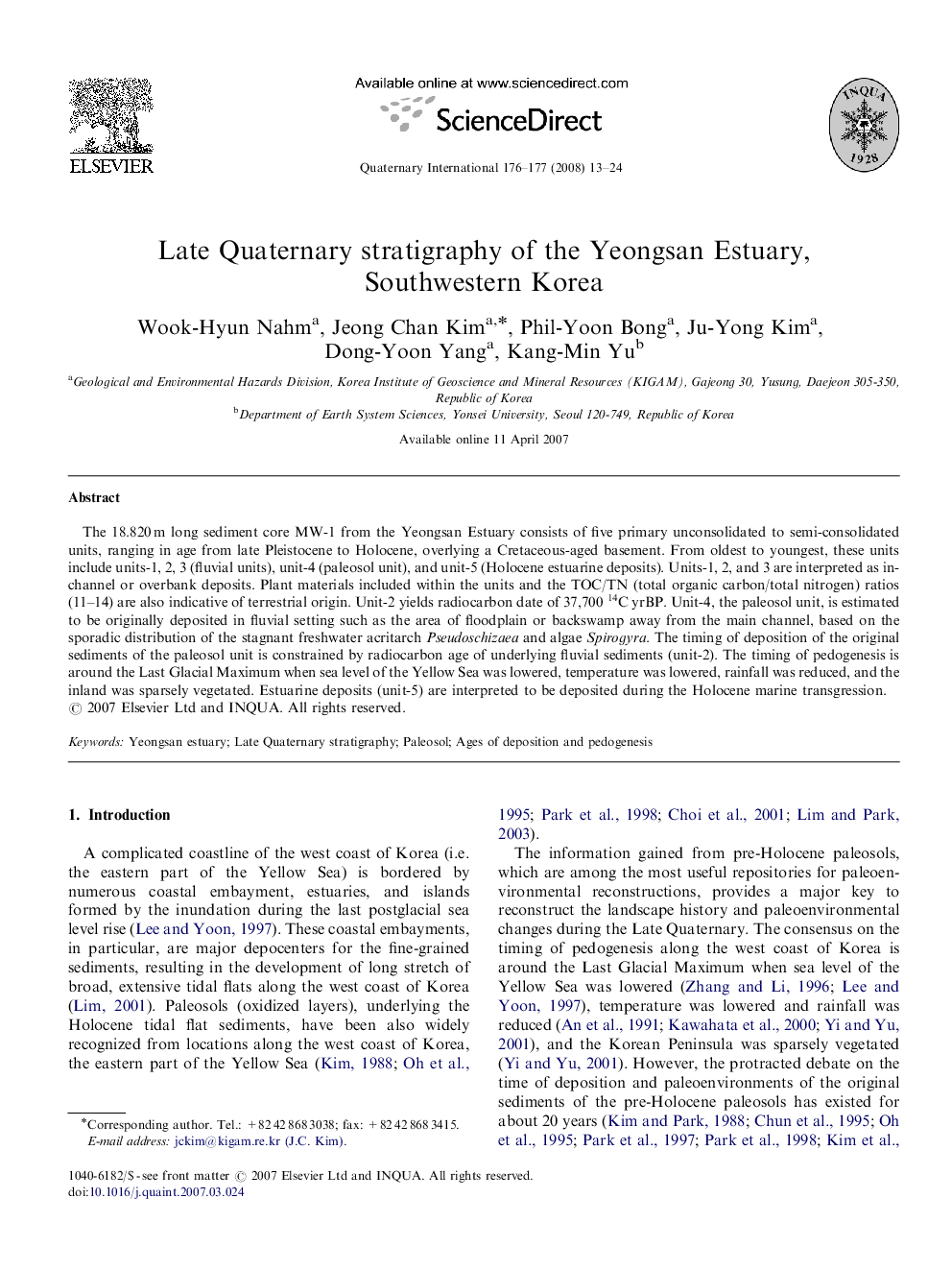| Article ID | Journal | Published Year | Pages | File Type |
|---|---|---|---|---|
| 1044570 | Quaternary International | 2008 | 12 Pages |
The 18.820 m long sediment core MW-1 from the Yeongsan Estuary consists of five primary unconsolidated to semi-consolidated units, ranging in age from late Pleistocene to Holocene, overlying a Cretaceous-aged basement. From oldest to youngest, these units include units-1, 2, 3 (fluvial units), unit-4 (paleosol unit), and unit-5 (Holocene estuarine deposits). Units-1, 2, and 3 are interpreted as in-channel or overbank deposits. Plant materials included within the units and the TOC/TN (total organic carbon/total nitrogen) ratios (11–14) are also indicative of terrestrial origin. Unit-2 yields radiocarbon date of 37,700 14C yrBP. Unit-4, the paleosol unit, is estimated to be originally deposited in fluvial setting such as the area of floodplain or backswamp away from the main channel, based on the sporadic distribution of the stagnant freshwater acritarch Pseudoschizaea and algae Spirogyra. The timing of deposition of the original sediments of the paleosol unit is constrained by radiocarbon age of underlying fluvial sediments (unit-2). The timing of pedogenesis is around the Last Glacial Maximum when sea level of the Yellow Sea was lowered, temperature was lowered, rainfall was reduced, and the inland was sparsely vegetated. Estuarine deposits (unit-5) are interpreted to be deposited during the Holocene marine transgression.
